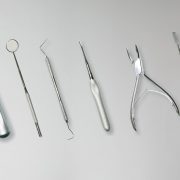Periodontitis is an inflammatory condition that affects the gums, the periodontal ligament and the bone surrounding the teeth. It is a chronic condition, which implies that it develops and sustains in the oral cavity over a long period of time. Irregular dental check ups, smoking, tobacco consumption and even an unhealthy diet are the common causes for periodontitis.
Now comes the interesting bit. Smoking, tobacco consumption, and an unhealthy diet along with socioeconomic status are shared risk factors for cardiovascular diseases (CVD) as well. Coincidence?Maybe not.
A joint workshop held by the European Federation of Periodontology (EFP) and the American Academy of Periodontology in 2012 aimed at reviewing the literature available to study the correlation between periodontal disease and systemic diseases, including CVD. It was postulated that a rise in the systemic inflammatory burden, such as the one seen in chronic periodontitis, was related causally with CVD and its sequelae. A marked elevation in C-reactive protein and oxidative stress secondary to periodontitis and bacteremia are the proposed mechanisms for this theory. (1)
(In the consensus report, CVD was a term used to encompass principally coronary heart disease, cerebrovascular disease and peripheral vascular disease.)
It was also concluded that there was a marked biological plausibility of periodontitis resulting in future ‘atherosclerotic cardiovascular disease’. Atherosclerotic cardiovascular disease is an inflammatory disease of the coronary arteries, characterised by formation of atheromas occluding the coronary arteries resulting in disability or even death. Periodontitis is a potential risk factor in initiating development and maturation of an atheroma. Bacteria like Streptococcus sanguis and P.gingivalis present in dental plaque enter the bloodstream during bacteremic episodes. It is hypothesised that these bacteria are shown to induce platelet activation and aggregation through the expression of collagen like platelet aggregation–associated proteins. The aggregated platelets may then play a role in atheroma formation and thrombosis. (2,3) Studies conducted on carotid atheromas obtained from patients were found to contain P.gingivalis, P.intermedia, A.actinomycetemcomitans and S.sanguis; all of which are known periodontal pathogens. (4)
Several epidemiological studies have provided evidence that patients with periodontitis exhibit significant epithelial dysfunction as measured by flow mediated dilation and a marked reduction thickness of the carotid media intima and elevated arterial calcification. Carotid media intima is the innermost layer of the carotid artery and an increase in its thickness is directly proportional to the severity of CVD. (1)
There is also a documented increase in the risk of the first coronary event in patients with clinically diagnosed and untreated periodontitis, compared to individuals without or less severe form of periodontitis. (5) It was also observed that following proper oral hygiene procedures like tooth brushing twice, flossing and regular teeth cleaning were associated with decreased risk of CVD. (6)
An important factor to be considered and made note of is the common risk factors between CVD and periodontitis. After several epidemiological studies, both longitudinal and cross sectional, it has become clear that even though the correlation between cardiovascular disease and periodontitis may not be causal, the common risk factors make it pertinent to keep in mind the oral hygiene of every at-risk patient.
These associations and correlations uncovered by several epidemiological and clinical studies can be utilised to guide community health and therapeutic measures. Reasonable evidence supports good oral health with heart health. It is pertinent for all general practitioners as well as cardiologists to take into account the oral hygiene and periodontal health of each of their patients. In my view, it should be standard practice to ask all patients to get a dental check up done once every 6 months, to evaluate oral hygiene and get a teeth cleaning procedure done, on a regular basis. Safe bet? Healthy mouth healthy heart healthy you!
References
- Periodontitis and cardiovascular diseases: Consensus report Sanz et al J Clin Periodontol. 2020 Mar; 47(3): 268–288.
- Aggregation of human platelets and adhesion of Streptococcus sanguis. Herzberg et al Infect Immun. 1983; 39: 1457-1469
- Effects of oral flora on platelets: possible consequences in cardiovascular disease. Herzberg MC Meyer MW J Periodontol. 1996; 67: 1138-1142
- Identification of periodontal pathogens in atheromatous plaques. Haraszthy VI Zambon JJ Trevisan M Zeid M Genco RJ J Periodontol. 2000; 71: 1554-1560
- The epidemiological evidence behind the association between periodontitis and incident atherosclerotic cardiovascular disease. Dietrich T, Sharma P, Walter C, Weston P, Beck J. Journal of Clinical Periodontology. 2013; 40: S70–84.
- Improved oral hygiene care attenuates the cardiovascular risk of oral health disease: a population-based study from Korea SY Park, SH Kim, SH Kang, et al. Eur Heart J, 40 (2019), pp. 1138-1145
Author Bio
Arpita Upadhyay<arpitaupadhyay6@gmail.com>




















Comments